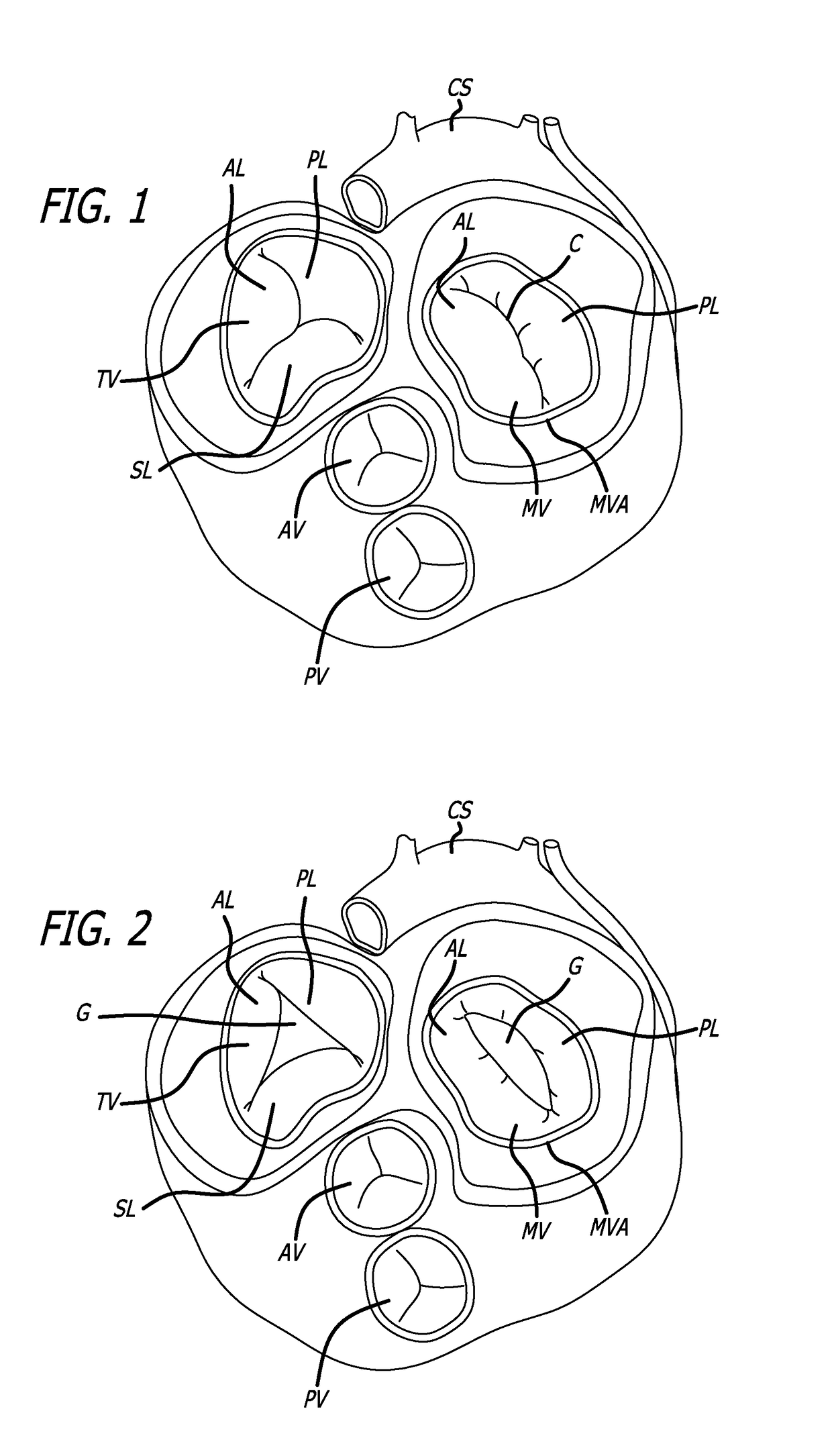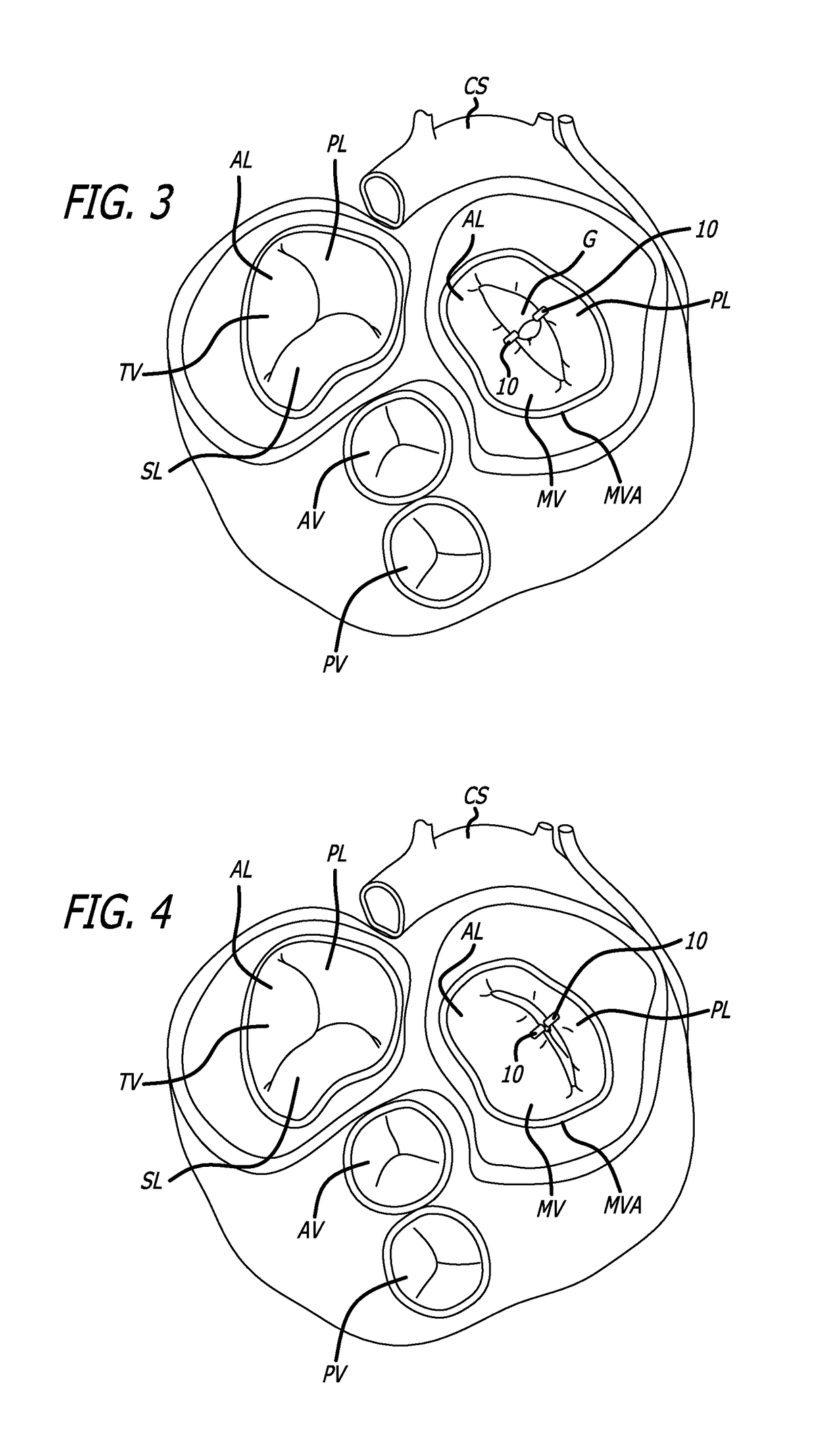Fixation devices, systems and methods for heart valve leaf repair
a technology of fixation device and heart valve leaf, which is applied in the field of repair of valves, can solve the problems of reducing the pumping efficiency of the heart, affecting the repair effect of the valve leaf, and putting the patient at risk of severe heart failure, and achieves the effects of minimizing tissue injury, enhancing retention, and high retention for
- Summary
- Abstract
- Description
- Claims
- Application Information
AI Technical Summary
Benefits of technology
Problems solved by technology
Method used
Image
Examples
Embodiment Construction
I. Cardiac Physiology
[0054]The human heart has four chambers, namely, the left atrium, the left ventricle, the right atrium and the right ventricle. The right atrium and the right ventricle together are sometimes referred to as the right heart. Similarly, the left atrium and the left ventricle together are sometimes referred to as the left heart. The left side of the heart provides the pumping action which supplies oxygenated blood to the arteries. The right side of the heart receives spent blood from the veins and pumps such blood to the lungs for oxygenation. The left atrium receives the oxygenated blood from the lungs via one of the four pulmonary veins. Blood from the left atrium is initially pumped into the chamber of the left ventricle which then pumps blood to the arteries. The left atrium is connected to the left ventricle by the mitral valve which is configured as a “check valve” which prevents back flow when pressure in the left ventricle is higher than that in the left at...
PUM
 Login to View More
Login to View More Abstract
Description
Claims
Application Information
 Login to View More
Login to View More - R&D
- Intellectual Property
- Life Sciences
- Materials
- Tech Scout
- Unparalleled Data Quality
- Higher Quality Content
- 60% Fewer Hallucinations
Browse by: Latest US Patents, China's latest patents, Technical Efficacy Thesaurus, Application Domain, Technology Topic, Popular Technical Reports.
© 2025 PatSnap. All rights reserved.Legal|Privacy policy|Modern Slavery Act Transparency Statement|Sitemap|About US| Contact US: help@patsnap.com



